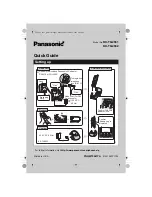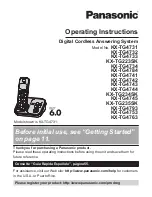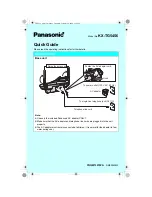
MERLIN LEGEND Communications System Release 5.0
Feature Reference
555-650-110
Issue 1
June 1997
Features
Page 528
Remote Access
a.
If a correct barrier code is entered, the caller hears a dial tone and
proceeds to Step 4. If an incorrect barrier code is entered, the caller
hears an alternating high-low tone followed by a dial tone, and can
enter the barrier code again. Up to three attempts are allowed.
b.
If the caller enters an incorrect barrier code, he or she hears a retry
tone 15 seconds after the system determines that the code is
invalid. During this step, the caller can enter two asterisks (
**
) to
erase the entry. This is treated as a failed attempt. The system then
erases the code entry and sends a retry tone for another attempt at
entering the barrier code (unless this was the caller’s third attempt).
If the caller fails all three attempts at entering the code, he or she
hears the reorder dial tone and is eventually disconnected by the
system.
4.
The caller may now enter a telephone number, pool number, ARS, or
maintenance code.
Class of Restrictions
3
8
Barrier codes should be used for all lines/trunks. A maximum of 16 barrier codes
is allowed, each with a different class of restrictions. The class of restrictions
allows or denies the use of system features to individuals or groups of users.
Classes of restrictions are assigned whether or not barrier codes are used for
remote access. If barrier codes are used, the class of restriction is assigned to
each barrier code. If barrier codes are not used, the class of restriction can be
assigned either to all non-tie trunks or to all tie trunks and DID trunks with remote
access.
The restriction classes are as follows:
■
Calling Restrictions. Determine whether remote access users can make
local and/or toll calls. The factory setting is outward-restricted, meaning the
user can make only inside calls. The restricted user cannot make toll calls
or any outside calls. The setting can be changed either to unrestricted,
meaning the user can make inside local, toll, or outside calls, or to
toll-restricted, meaning the user can make only inside and local outside
calls. When barrier codes are not used, restrictions are assigned to all
trunks and cannot be assigned to individual tie trunk or non-tie trunks.
When barrier codes are used, restrictions are assigned to individual barrier
codes.
■
Automatic Route Selection (ARS) Facility Restriction Level. If the
system uses the Automatic Route Selection (ARS) feature, you can restrict
the use of outgoing lines/trunks by remote access users by assigning a
user restriction level from 0 to 6. The factory setting, 0, is the most
restrictive, and 6 is the least restrictive. The value assigned corresponds
inversely to the Facility Restriction Level (FRL) assigned to the ARS route.
That is, an FRL of 0 is the least restrictive, and one of 6 is the most
restrictive. To restrict remote users from using selected lines/trunks, you
should assign a value that is lower than the FRL assigned to the route.
















































